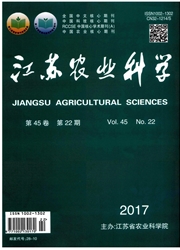

 中文摘要:
中文摘要:
针对水体新兴微污染物之一的药物残留物,介绍了其在世界主要国家水体中的分布情况,总结了分析检测方法和生态毒性评价方面的研究进展,并提出了导致目前污水处理厂药物残留物处理效率较低的2个原因:一是在立法层面上,现行的污染物排放标准没有针对药物残留物的明确要求;二是在技术层面上,适用高级水处理技术的发展还不完善。基于预防性原则,建议对污水处理厂进行必要的升级改造,提高传统污水处理厂的处理效果,阻断药物残留物进入自然水体的途径。
 英文摘要:
英文摘要:
This paper collects data from worldwide research groups and aims to critically review and analyse the advances of knowledge development in the area of occurrence, detection, and toxicity assessment of pharmaceutical residues from around the globe and to recommend the research needs in this research area. In addition, this paper puts forward suggestions regarding future research needs and challenges in terms of toxicity assessment and relevant legislation. To date, no regulatory guidelines for WWTPs regarding the discharging limits of pharmaceuticals have been established, which may be caused by two reasons. Firstly, the long-term and chronic influence of drugs in the environment lacks scientific and firm conclusion. Sec- ondly, the emission limit of these drugs is difficult to decide, which not only depends on their harm to the environment but also the economic conditions of available treatment techniques. However, based on the precautionary principle, to prevent the entry of pharmaceutical compounds into the aquatic environment via WWTPs is necessary.
 同期刊论文项目
同期刊论文项目
 同项目期刊论文
同项目期刊论文
 期刊信息
期刊信息
